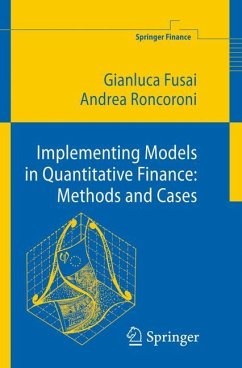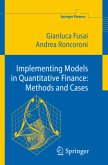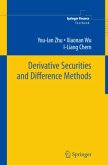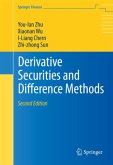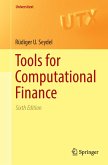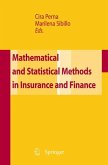This book puts numerical methods in action for the purpose of solving practical problems in quantitative finance. The first part develops a toolkit in numerical methods for finance. The second part proposes twenty self-contained cases covering model simulation, asset pricing and hedging, risk management, statistical estimation and model calibration. Each case develops a detailed solution to a concrete problem arising in applied financial management and guides the user towards a computer implementation. The appendices contain "crash courses" in VBA and Matlab programming languages. A companion CD provides ready-to-run codes (VBA, MATLAB).
Introduction This book presents and develops major numerical methods currently used for solving problems arising in quantitative ?nance. Our presentation splits into two parts. Part I is methodological, and offers a comprehensive toolkit on numerical me- ods and algorithms. This includes Monte Carlo simulation, numerical schemes for partial differential equations, stochastic optimization in discrete time, copula fu- tions, transform-based methods and quadrature techniques. Part II is practical, and features a number of self-contained cases. Each case introduces a concrete problem and offers a detailed, step-by-step solution. Computer code that implements the cases and the resulting output is also included. The cases encompass a wide variety of quantitative issues arising in markets for equity, interest rates, credit risk, energy and exotic derivatives. The corresponding problems cover model simulation, derivative valuation, dynamic hedging, portfolio selection, risk management, statistical estimation and model calibration. R We provide algorithms implemented using either Matlab or Visual Basic for R Applications (VBA). Several codes are made available through a link accessible from the Editor's web site. Origin Necessity is the mother of invention and, as such, the present work originates in class notes and problems developed for the courses "Numerical Methods in Finance" and "Exotic Derivatives" offered by the authors at Bocconi University within the Master in Quantitative Finance and Insurance program (from 2000-2001 to 2003-2004) and the Master of Quantitative Finance and Risk Management program (2004-2005 to present).
Introduction This book presents and develops major numerical methods currently used for solving problems arising in quantitative ?nance. Our presentation splits into two parts. Part I is methodological, and offers a comprehensive toolkit on numerical me- ods and algorithms. This includes Monte Carlo simulation, numerical schemes for partial differential equations, stochastic optimization in discrete time, copula fu- tions, transform-based methods and quadrature techniques. Part II is practical, and features a number of self-contained cases. Each case introduces a concrete problem and offers a detailed, step-by-step solution. Computer code that implements the cases and the resulting output is also included. The cases encompass a wide variety of quantitative issues arising in markets for equity, interest rates, credit risk, energy and exotic derivatives. The corresponding problems cover model simulation, derivative valuation, dynamic hedging, portfolio selection, risk management, statistical estimation and model calibration. R We provide algorithms implemented using either Matlab or Visual Basic for R Applications (VBA). Several codes are made available through a link accessible from the Editor's web site. Origin Necessity is the mother of invention and, as such, the present work originates in class notes and problems developed for the courses "Numerical Methods in Finance" and "Exotic Derivatives" offered by the authors at Bocconi University within the Master in Quantitative Finance and Insurance program (from 2000-2001 to 2003-2004) and the Master of Quantitative Finance and Risk Management program (2004-2005 to present).
From the reviews: "As the title suggests the book is divided into two parts. ... The style of the book is very inviting and it should be on the shelf of every serious researcher and practitioner in quantitative finance, including graduate students. Teachers could easily use the book in their applied courses. Overall, I think the book is a clear self-contained guide to implementing models in quantitative finance and as such it is going to be very popular in quant and academic circles." (Ita Cirovic Donev, MathDL, July, 2008) "This application-oriented book presents the major numerical methods currently used and describes how these methods can be used to solve problems in quantitative finance. ... Each chapter includes exercises for student practice ... . The presentation is at an intermediate-advanced level and serves as an introductory tutorial to the field of quantitative finance. Quantitative analysts, researchers and graduate students in quantitative finance will find this book useful." (Stefan Henn, Mathematical Reviews, Issue 2009 g)

